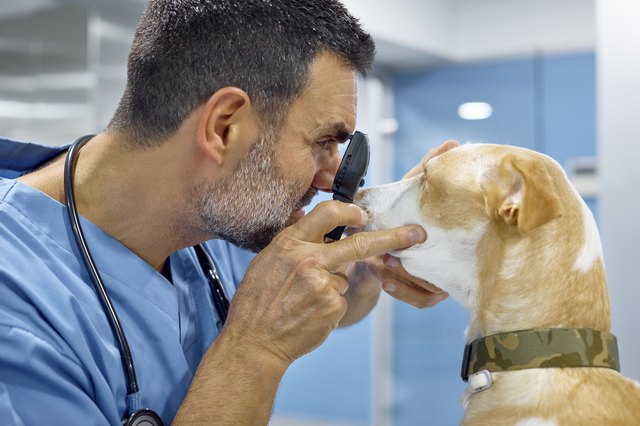

Glaucoma is a medical emergency that is painful for dogs. This pressure damages the eye’s internal structures, and can lead to permanent vision loss if left untreated for long. It occurs when fluids in the eye do not drain properly, causing a continuous and gradual buildup that ultimately increases pressure in the eye. Glaucoma is another eye condition that can cause cloudy eyes in dogs. Endocrine problems like diabetes can occur in middle-aged dogs, and hereditary diseases can affect very young puppies in some cases. If your dog tends to bump into things, however, it is likely that he is developing cataracts.Īge is not the only inciting factor for cataracts: hereditary diseases and the development of diabetes can also cause cataracts. With a thorough eye exam, your veterinarian will be able to distinguish the difference. Most dogs with cataracts can still see shapes and shadows, but it is like looking through a frosted window or a muddy windshield.Ĭataracts are often characterized by cloudiness just beyond the pupils (the hole in the center of the iris), but it is easy for pet parents to mistake nuclear sclerosis (a normal change in the lens associated with aging) for cataracts. Cataracts can partially or completely block light from passing through, and vision cannot be processed. Physiologic anisocoria under various lighting conditions.Canine cataracts occur when the inside of the lens becomes cloudy due to the breaking down of proteins. Label: Salagen - pilocarpine hyrochloride tablet, film coated.You can learn more about how we ensure our content is accurate and current by reading our editorial policy. We link primary sources - including studies, scientific references, and statistics - within each article and also list them in the resources section at the bottom of our articles. Medical News Today has strict sourcing guidelines and draws only from peer-reviewed studies, academic research institutions, and medical journals and associations. eye trauma, such as being hit or poked in the eye.Physical problems with the eyes that can cause the pupils to be different sizes include: Sympathomimetics, which help treat heart failure or sepsis.Pilocarpine, which is eye drops or gels that treat glaucoma.Oral pilocarpine, which treats dry mouth or damaged saliva glands due to head and neck cancer treatment, or Sjogren’s Syndrome.

Anticholinergics, a class of medication for conditions including:.MedicationsĬertain medications can also cause pupils to be different sizes. It is not a life-threatening condition.Ībout 90% of cases occur in women between 20 and 40 years of age.Īlthough usually not harmful, having a tonic pupil may lead to someone becoming miotic, or chronically having a small pupil. Tonic pupil is where one pupil will appear abnormally large in light, taking a long time to constrict. little or no sweating on that side of the face.They will also have all or some of the following symptoms: People with Horner’s syndrome have one abnormally small pupil. An aneurysm causes pain and is a life-threatening condition that needs immediate attention. TNP can be due to pressure on the third nerve from an artery aneurysm. However, some cases of TNP in children are congenital, meaning they occur from birth. Other causes of TNP in children include migraine and severe infections, such as meningitis. potential loss of ability to focus on objects.abnormalities in the muscles around the eye.slight drooping of the eyelid, known as ptosis.Anyone experiencing symptoms after a head injury must see a doctor.Īside from the pupils being different sizes, other symptoms of TNP include: Third nerve palsy (TNP) can cause the pupils to be different sizes.Ĭauses of TNP include a brain hemorrhage, trauma, or aneurysm. Share on Pinterest Third nerve palsy or Horner’s syndrome may cause anisocoria. a disease affecting the information pathways to the pupil.a disease affecting the iris, or colored area.Pathological anisocoria: This type is when the difference in pupil size comes from one of the following: Mechanical anisocoria: This type of anisocoria is the result of physical damage to the eye, such as an injury or a condition that causes inflammation to the eye. The difference between the pupil sizes is more or less constant, even when the light changes, and is not usually of concern. Physiological anisocoria may be temporary or permanent, depending on individual cases.Ībout 15–30% of the population experiences physiological anisocoria. It is the most common type of anisocoria, and the difference between the pupil sizes is no more than 1 millimeter. Physiological anisocoria: This is when the pupils are naturally different sizes. Share on Pinterest Physiological anisocoria is the most common type of anisocoria.


 0 kommentar(er)
0 kommentar(er)
